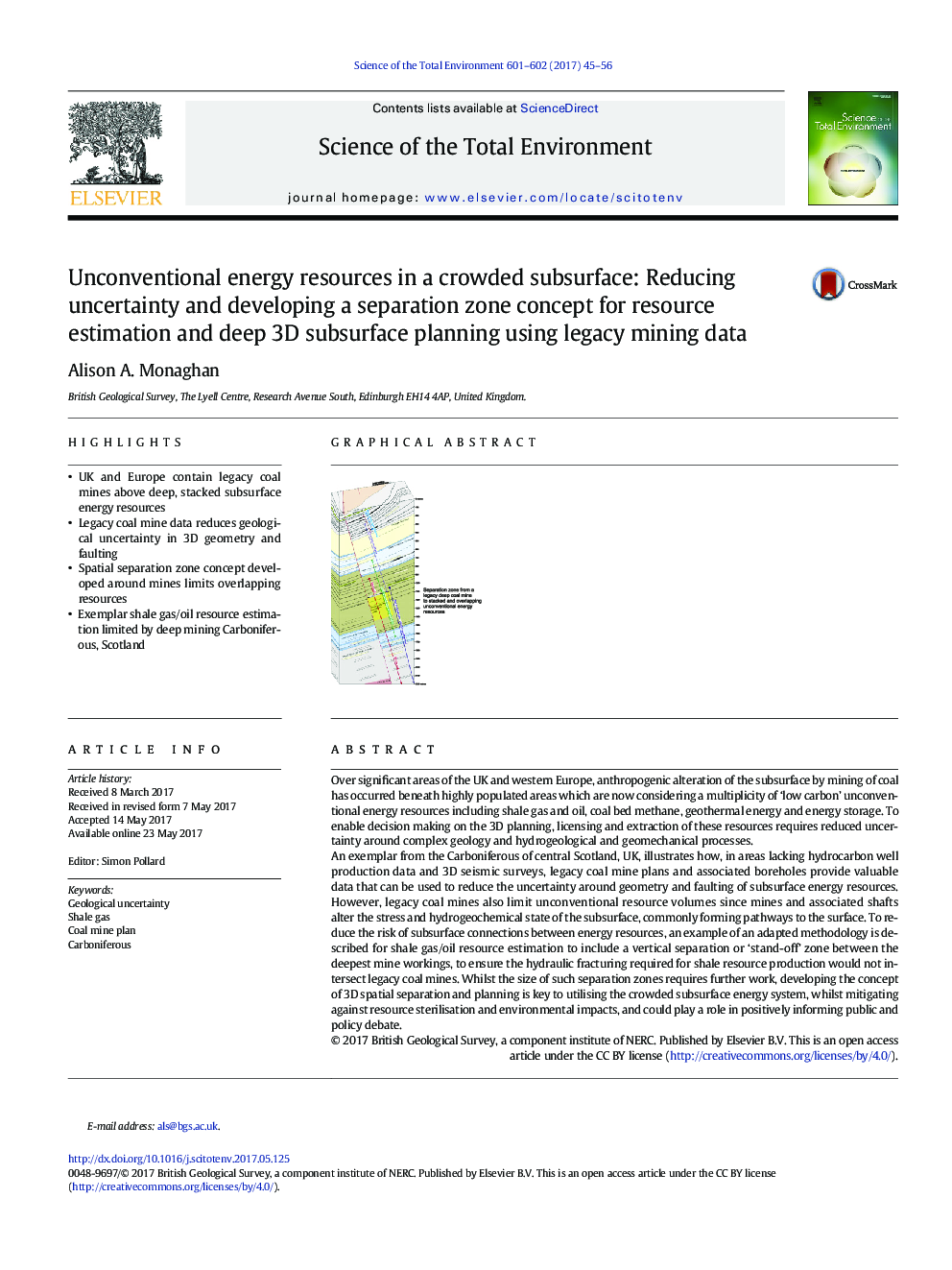| کد مقاله | کد نشریه | سال انتشار | مقاله انگلیسی | نسخه تمام متن |
|---|---|---|---|---|
| 5750362 | 1619697 | 2017 | 12 صفحه PDF | دانلود رایگان |

- UK and Europe contain legacy coal mines above deep, stacked subsurface energy resources
- Legacy coal mine data reduces geological uncertainty in 3D geometry and faulting
- Spatial separation zone concept developed around mines limits overlapping resources
- Exemplar shale gas/oil resource estimation limited by deep mining Carboniferous, Scotland
Over significant areas of the UK and western Europe, anthropogenic alteration of the subsurface by mining of coal has occurred beneath highly populated areas which are now considering a multiplicity of 'low carbon' unconventional energy resources including shale gas and oil, coal bed methane, geothermal energy and energy storage. To enable decision making on the 3D planning, licensing and extraction of these resources requires reduced uncertainty around complex geology and hydrogeological and geomechanical processes.An exemplar from the Carboniferous of central Scotland, UK, illustrates how, in areas lacking hydrocarbon well production data and 3D seismic surveys, legacy coal mine plans and associated boreholes provide valuable data that can be used to reduce the uncertainty around geometry and faulting of subsurface energy resources. However, legacy coal mines also limit unconventional resource volumes since mines and associated shafts alter the stress and hydrogeochemical state of the subsurface, commonly forming pathways to the surface. To reduce the risk of subsurface connections between energy resources, an example of an adapted methodology is described for shale gas/oil resource estimation to include a vertical separation or 'stand-off' zone between the deepest mine workings, to ensure the hydraulic fracturing required for shale resource production would not intersect legacy coal mines. Whilst the size of such separation zones requires further work, developing the concept of 3D spatial separation and planning is key to utilising the crowded subsurface energy system, whilst mitigating against resource sterilisation and environmental impacts, and could play a role in positively informing public and policy debate.
176
Journal: Science of The Total Environment - Volumes 601â602, 1 December 2017, Pages 45-56